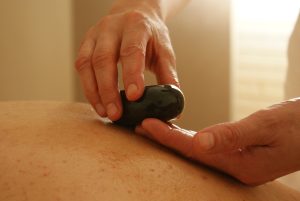In the world of modern technology and fast-paced living, stress and tension have become an integral part of our daily lives. Massage, as one of the ways to relax and rejuvenate, is gaining increasing popularity. Massage therapists play a key role in ensuring the well-being of clients, but the question arises: how many massages should a massage therapist do in a day to maintain a balance between efficiency and self-care?
This question is relevant for massage therapists, aspiring professionals, and experienced practitioners looking to improve their practice. In this article, we will explore norms, recommendations, and factors affecting the number of massages, as well as provide strategies and advice on optimal time management and self-care. A thorough understanding of this topic will help massage therapists succeed in their profession while maintaining a balance between caring for clients and themselves.
The Importance of Massage and the Role of the Massage Therapist

Massage is not only a pleasant procedure but also a powerful tool for maintaining physical and emotional health. Let’s look at why it is so important:
Physical and Psychological Benefits
- Pain and Tension Relief: Helps relax muscles, improves blood and lymph circulation, which can reduce pain and alleviate tension in the body.
- Increased Mobility and Flexibility: Regular sessions improve the range of motion and prevent muscular imbalances.
- Stress Reduction and Improved Psychological Well-being: Promotes the release of endorphins and reduces stress levels, enhancing mood and overall psychological well-being.
The Role of the Massage Therapist in Client Care
- Professionalism and Skills of the Massage Therapist.
- Understanding the Needs and Expectations of Clients.
- Creating a Safe and Comfortable Atmosphere.
- Effective Communication with Clients.
Differences in Norms for Different Types of Massage


- Medical Massage: Medical massage often has stricter norms because clients may have medical issues. This includes restrictions on the number of sessions per day and specific documentation requirements.
- Sports Massage: Sports massage may have an intense schedule during the sports season but includes rest periods during the off-season.
- Relaxation Massage: Relaxation massage therapists often have a more flexible schedule, as their goal is to provide clients with relaxation and pleasure. They conduct fewer sessions per day, focusing more on session duration and quality.
Effective Time Management

Planning and Organizing the Workday
- Setting Working Hours: Establishing fixed working hours to create structure and prevent overworking.
- Allotting Breaks: Scheduling short breaks between sessions for rest and preparation for the next client.
- Efficient Use of Time: Planning clients in a way that minimizes inefficient gaps between sessions.
Health and Self-Care
- Limiting the Number of Sessions: Determining the optimal number of sessions per day to avoid burnout.
- Self-Care: Taking care of physical and emotional health, including regular breaks, physical activity, and a healthy diet.
Effective Interaction with Clients
- Effective Communication: Focused and attentive communication with clients to optimize session quality.
- Session Planning: Adapting sessions to meet the needs and expectations of clients.
Professional Development
- Training and Skill Enhancement: Investing in education and skill development to become a more qualified and effective massage therapist.
- Self-assessment: Regular self-assessment and analysis of one’s own practice to identify areas for improvement.
The Importance of Reputation and Recommendations

- Professionalism and Reliability: A massage therapist’s reputation plays a vital role in attracting and retaining clients. Clients seek massage therapists they can trust and who display professionalism.
- Competing Successfully: A good reputation can help stand out among competitors and attract more clients.
- Influence on Pricing: Massage therapists with an excellent reputation can set higher prices for their services.
- Positive Reviews: Satisfied clients leaving positive reviews can help attract new clients.
- Word-of-Mouth Marketing: Recommendations from satisfied clients are a powerful means of spreading the word about a massage practice.
- Long-Term Relationships: Satisfied clients leaving positive reviews and recommendations often become loyal clients, ensuring a steady stream of business.
Questions and Answers:
What norms for the number of sessions do professional organizations recommend?
Specific norms for the number of massage sessions per day vary depending on professional organizations, regions, and types of massage. The American Massage Therapy Association (AMTA) typically recommends no more than 5-6 sessions per day, with breaks between sessions for client preparation and therapist rest. The International Massage Association (IMA) provides similar recommendations, emphasizing therapist safety and well-being.
How do massage therapists plan their workday?
Massage therapists establish their standard work schedule, including the days and hours when they are available to clients. Between each session, they allocate time for client preparation, record-keeping, sanitation, and therapist rest. This approach helps prevent burnout and ensures the quality of service. Additionally, massage therapists incorporate short breaks into their schedule for rest, stretching, and meals.
How many massages should a therapist do a day?
A massage therapist typically performs around 5-6 massage sessions a day, depending on the length of each session and personal stamina. It is important for a massage therapist to balance the number of clients to prevent burnout.
What should a therapist do if experiencing burnout?
If a massage therapist is experiencing burnout, it’s essential to address it immediately. This could involve taking a break from work, practicing self-care, and seeking professional support if needed. Long hours and back-to-back massages can contribute to burnout, so it’s crucial to manage workload and prioritize well-being.
How many clients do great massages attract?
Great massages often lead to a loyal client base. Massage therapists who provide excellent service can attract many clients and generate repeat business through word-of-mouth referrals. Investing in delivering high-quality massages can significantly benefit a therapist’s practice.
How many massages should a therapist perform in a week?
The number of massages a therapist should perform in a week varies depending on individual capacity and preferences. Some may choose to offer massages for 30-40 hours a week, while others may limit their sessions to prevent overexertion. It’s essential for a massage therapist to balance their workload and prioritize self-care.













![11 Best Alternatives to Bedpage: Your Ultimate Guide [March 2024]](https://massage.dating/wp-content/uploads/2024/03/Best-Alternatives-to-Bedpage-300x200.jpg)
























































































































